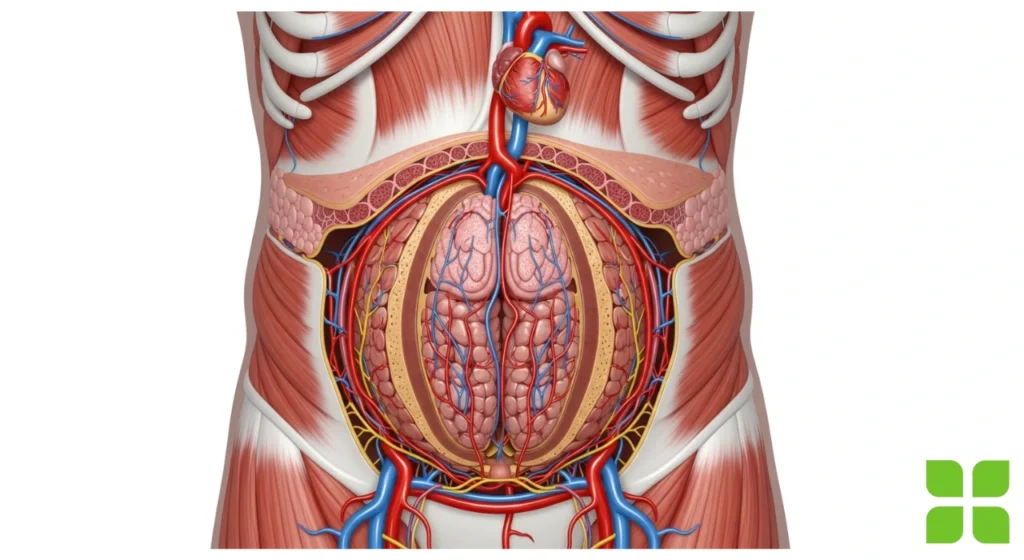Women’s belly fat: Reducing and maintaining it

What does your waist circumference reveal about your overall health? Learn the causes, risks, and solutions for (Women’s belly fat) belly obesity, which is increasingly prevalent after menopause.
Some people believe that growing a waist is a cost of aging. Because body fat tends to migrate to the belly after menopause, this can be especially true for women.
But it’s not only the additional tummy fat that makes it difficult to button up your favorite pants. There are major health concerns associated with abdominal obesity, according to research. However, there are ways to lessen the risks that belly obesity poses.
Jump to..
The causes of Women’s belly fat

A person’s weight is mostly determined by four factors:
- calories consumed daily.
- Every day, calories were burnt off.
- Age.
- genetics.
People are more prone to accumulate excess weight, particularly belly fat, if they consistently consume more calories from food and beverages than they expend each day.
Growing older also has an impact. As people age, they lose muscle. Additionally, the issue is more severe for people who do not engage in physical activity. The body burns calories more slowly when muscular mass is lost. Keeping a healthy weight could grow more difficult as a result.
Even if they don’t put on weight, many women observe that their belly fat increases as they age. Estrogen appears to influence the location of fat in the body, therefore this is probably the result of a reduced amount of the hormone.
The likelihood that a person would be overweight or obese can also be influenced by their genes. It also has an impact on the body’s fat storage location.
Belly fat is not only superficial.

Belly fat is problematic because it extends beyond the cushion that is just beneath the skin. We call that subcutaneous fat. Visceral fat is a subset of belly fat. The internal organs are surrounded by that, which is located deep within the belly.
No matter how much a person weighs overall, having a lot of belly fat increases the risk of:
- elevated blood pressure.
- blood fat levels that are harmful.
- Apnea during sleep.
- heart condition.
- diabetes and elevated blood sugar.
- some types of cancer.
- stroke.
- liver that is fat.
- early demise from any reason.
Assessing your midsection

Measure your waist to see whether belly fat is an issue:
- Place a tape measure slightly above your hipbone, around your naked tummy, as you stand.
- Without putting pressure on the skin, the tape measure should fit snugly. Make sure the entire tape measure is level.
- Breathe out, relax, and take a waist measurement. Avoid feeling nauseous when measuring.
Women are at a higher risk of health issues and have an unhealthy level of belly fat if their waist measurement is larger than 35 inches (89 cm). In general, nonetheless, the health risk factors increase with the size of the waist.
Related:Alcohol Belly in Women: Causes, Risks, and Solutions
Cutting away the fat

Crunches and other belly workouts are good ways to tone and develop your abdominal muscles. However, such activities won’t be enough to reduce abdominal fat. Fortunately, visceral fat may be reduced using the same diet and activity plans that can help you lose other excess weight and reduce your body fat percentage. Use these suggestions:
Consume a nutritious diet. A nutritious diet consists of:
- putting a focus on plant-based diets that consist of fruits, vegetables, and whole grains.
- choosing lean protein sources, such as fish and low-fat dairy products.
- cutting back on processed meats, meat’s saturated fat, and high-fat dairy goods like butter and cheese.
- Selecting monounsaturated and polyunsaturated fats in moderation. Nuts, fish and shellfish, and some vegetable oils contain them.
Make sensible portion size choices. Calories add up, even when you’re choosing healthier options. Reduce your portion amounts at home. Share meals at eateries. Or take half of your supper and go home with the remainder.
Swap out sugary beverages. Instead, sip water or other sugar-free liquids.
Get started. The Department of Health and Human Services advises most healthy individuals to engage in intense aerobic exercise, like running, for at least 75 minutes per week or moderate aerobic at least 150 minutes a week of physical activity, such as brisk walking.It is suggested to engage in strength training activities at least twice a week. You may need to increase your workout if you want to reach certain fitness objectives or shed weight. Both strength training and high-intensity interval training (HIIT) have been shown to help decrease abdominal fat.
It requires patience and work to lose abdominal fat. Aim for gradual weight loss to reduce excess fat and prevent it from returning. To get started and remain on course, ask your healthcare professional for assistance.








One thought on “Women’s belly fat: Reducing and maintaining it”